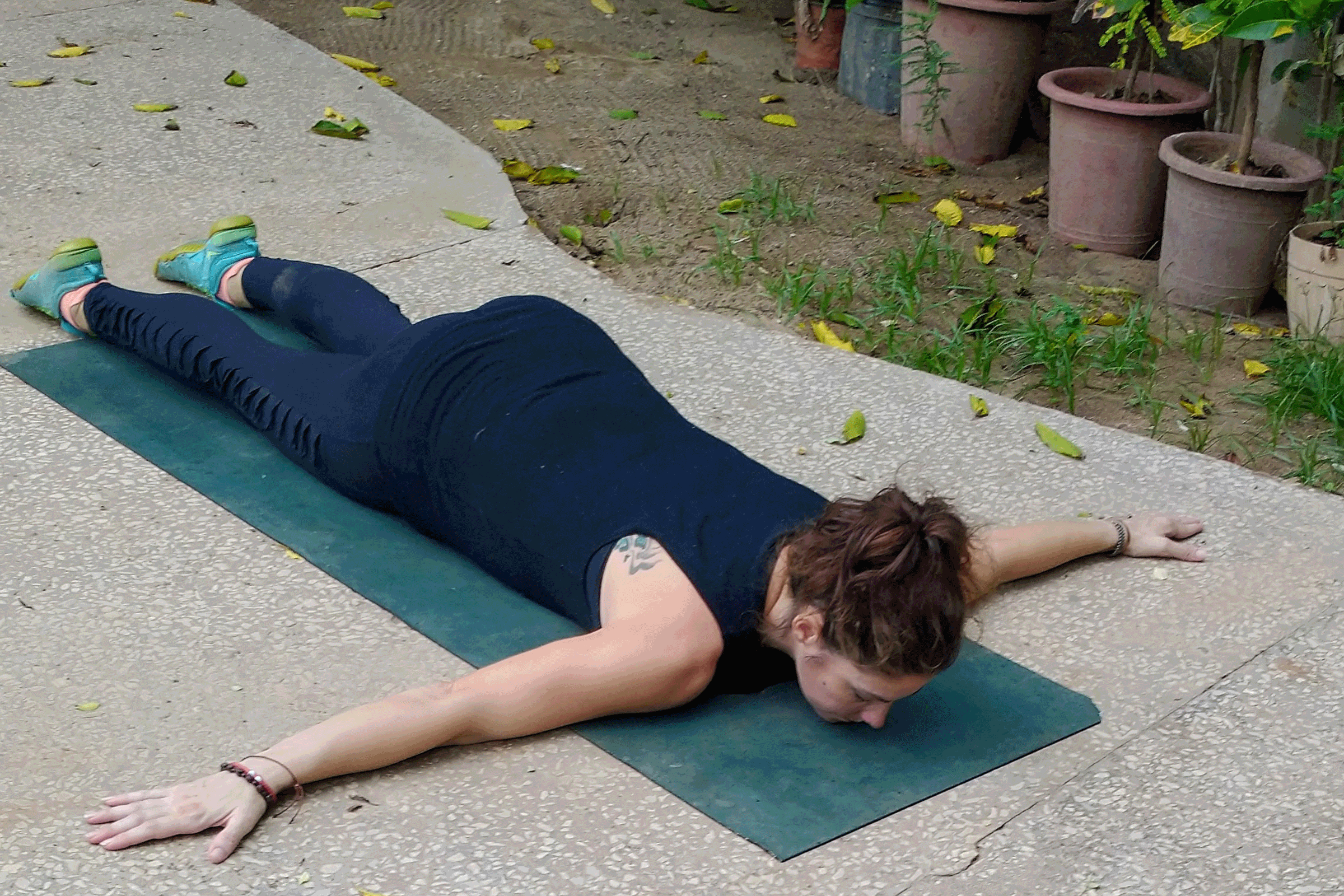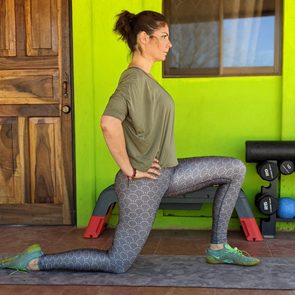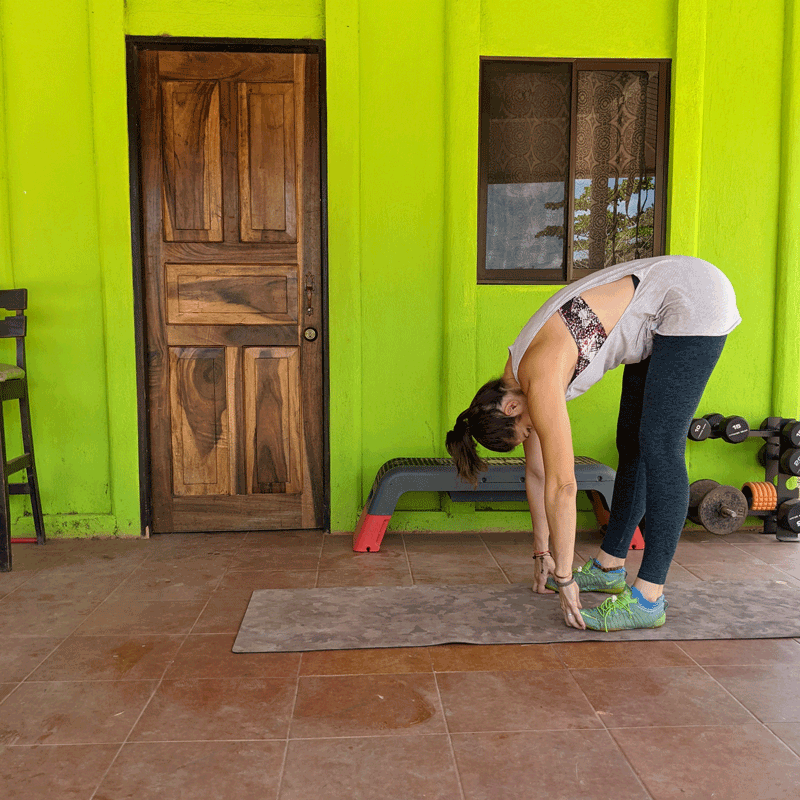How to Do a Scorpion Stretch—and Why Your Hips and Back Will Love It
Updated: Jun. 01, 2021
The scorpion stretch isn't nearly as scary as it sounds. In fact, it's a great way to increase the flexibility of your hip flexors and lower back.
Stretch like a scorpion
If you’ve ever come face-to-face with a live scorpion, you know a glimpse of its stinger is enough to make you flee.
The scorpion stretch is designed to mimic the appearance of a scorpion—not to deliver a system-shocking sting.
The big question you’re probably asking right about now is, “Why would I want to emulate a venomous creature?”
Because it provides a killer stretch—pun intended.
Benefits of the scorpion stretch
The great thing about the scorpion stretch is that it simultaneously targets two chronically tight areas—the hip flexors (the muscles near the top of your thighs) and the lower back—while working on spinal rotation.
Why does that matter? Twisting at the lower back is critical for everyday movements. Think about it: you twist when you put away dishes or reach to pull out a desk drawer. Limitations in rotation can negatively affect daily activities.
Another reason exercise experts and enthusiasts love the scorpion stretch is because it targets the glutes (butt) and can even stretch your quads and abs if you tend to be tight through your hips and core.
And because you’ll need to keep your chest and shoulders steady throughout the exercise, the move can relieve tightness in those areas of your upper body.
Bonus: it’s easy to check your form, even if you’re doing the move alone at home. Simply verify your shoulders, chest, and arms remain steady and connected to the ground throughout the movement.
When to do the scorpion stretch
The scorpion stretch is versatile. You can add it to your routine in a couple of ways.
Try it as a dynamic stretch, which you’ll do during your warm-up routine. The scorpion stretch is a great move for before a lower-body or core workout.
This is a killer move to do before practically any sporting event. Whether you’re playing tennis, basketball, ultimate frisbee, or golf, spinal rotation and lower-body agility tend to be pretty important. In that way, the scorpion stretch can limber you up for running, changing direction, swinging, or throwing.
But spinal rotation and hip flexor mobility are also important for general day-to-day life. So even if you’re not gearing up for a tough workout or a soccer game, you can use the scorpion stretch statically to help maintain or improve flexibility.
To do that, add the stretch to the end of your workout to help loosen up your back and hips.
When to skip the scorpion stretch
The thing about the scorpion stretch is that while it’s incredibly effective at targeting multiple muscle groups, it’s not appropriate for everyone. It’s not the stretch for people with low back pain.
“This stretch can be difficult for those with tight chest and shoulder muscles as well as those with tight hip flexors and should be approached with caution,” says Hannah Daugherty, a personal trainer certified by the National Academy of Sports Medicine and health coach who writes for the site Fitter Living.
While generally considered a safe stretch when performed correctly, the rotation of the lower back and hips might make it inaccessible to those with hip or lower back pain.
Daugherty also stresses that if you’re experiencing pain in your shoulders (or anywhere else!) when you try to reach your lifted leg across your body, stop the exercise. You want to enjoy a light stretch, but you should never experience pain.

How to do the scorpion stretch
Unlike its namesake the scorpion stretch is safe for most people. You just have to be careful to do the move correctly.
Ready to make like a scorpion? Follow these steps:
- Lie facedown on a mat with your legs fully extended behind you and your arms stretched out to either side. Your body should be in the shape of a T.
- Rest your chin on the mat and look down so your spine is in a neutral position from your neck to your tailbone.
- Press your palms lightly onto the floor to remind yourself to keep your upper body in this position. During the stretch, avoid moving your upper back, chest, or shoulders.
- Lift your right leg from the ground and bend your right knee to a roughly 90-degree angle. Reach your right foot across your left leg and try to touch the ground outside your left leg with your right toes.
- Your hips and lower back will rotate as you move, but your chest and shoulders should stay in place.
- When you feel a stretch through your right hip flexor, your right glute, and your lower back, stop moving. (Your toes do not need to touch the ground, or even come close.)
From here, you have two options: perform a static or dynamic stretch.
Static stretch
Hold your stretched position for 10 to 15 seconds before returning your right foot to the ground. Repeat the exercise three to four more times before switching sides.
Dynamic stretch
When you feel your hip flexor stretch, hold the position for a second, then carefully reverse the movement and return your right foot to the floor in the starting position. Immediately switch sides, performing the same stretch with your left leg.
Alternate between performing the scorpion stretch to the right and left sides for a total of 20 repetitions. Rest, then repeat one or two more times.
Next, try the pigeon stretch, another great move for your hips.























